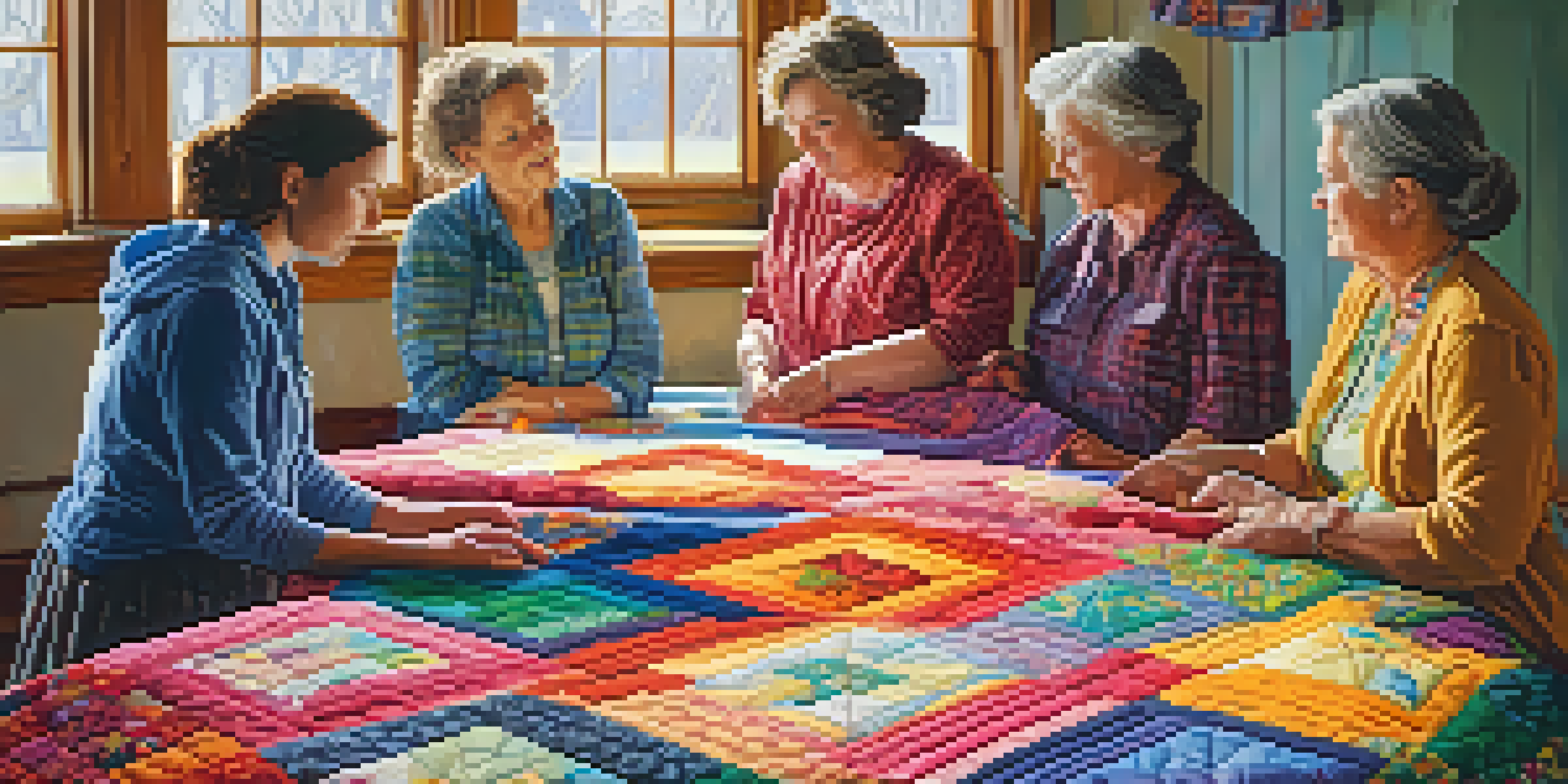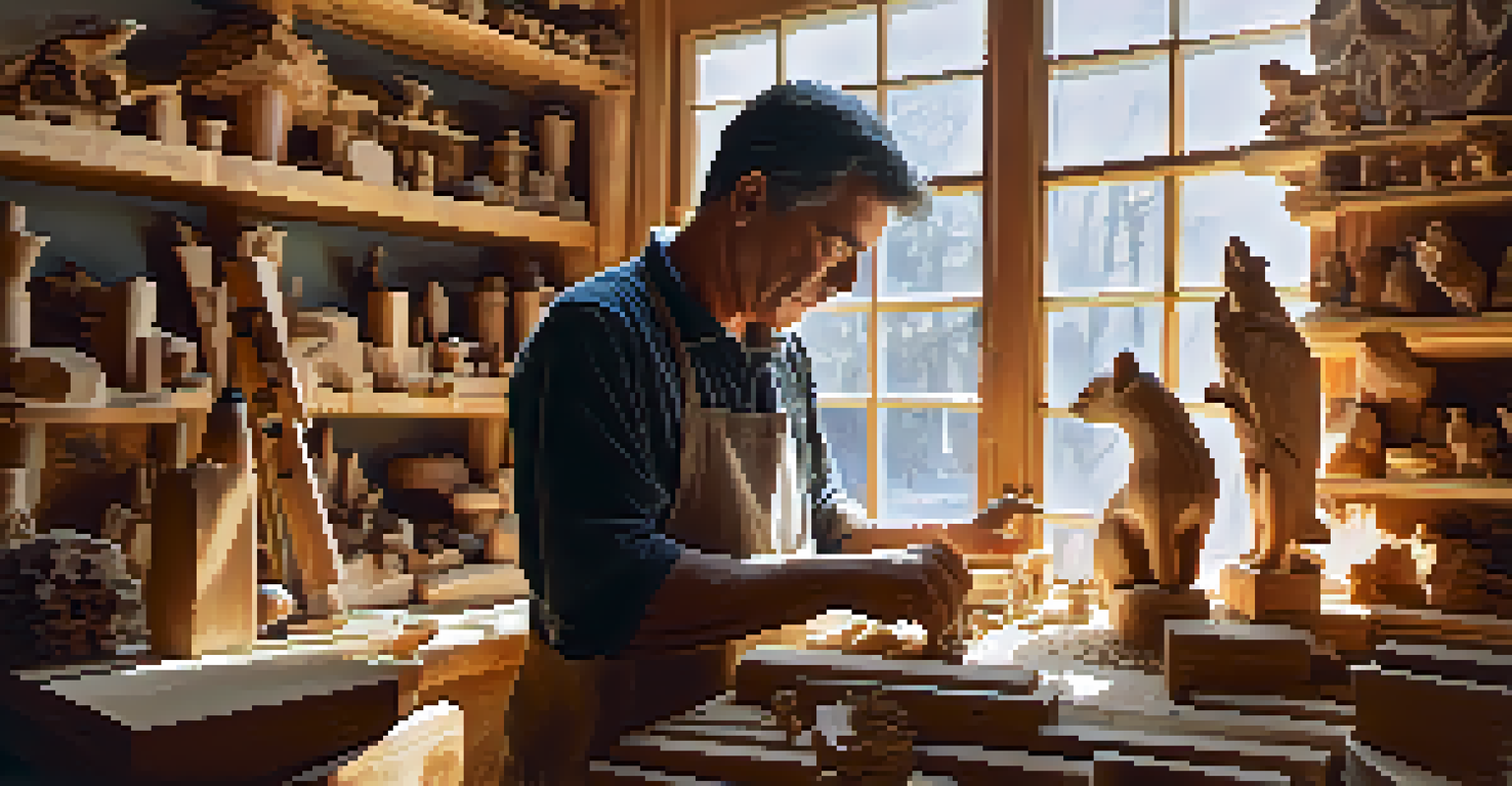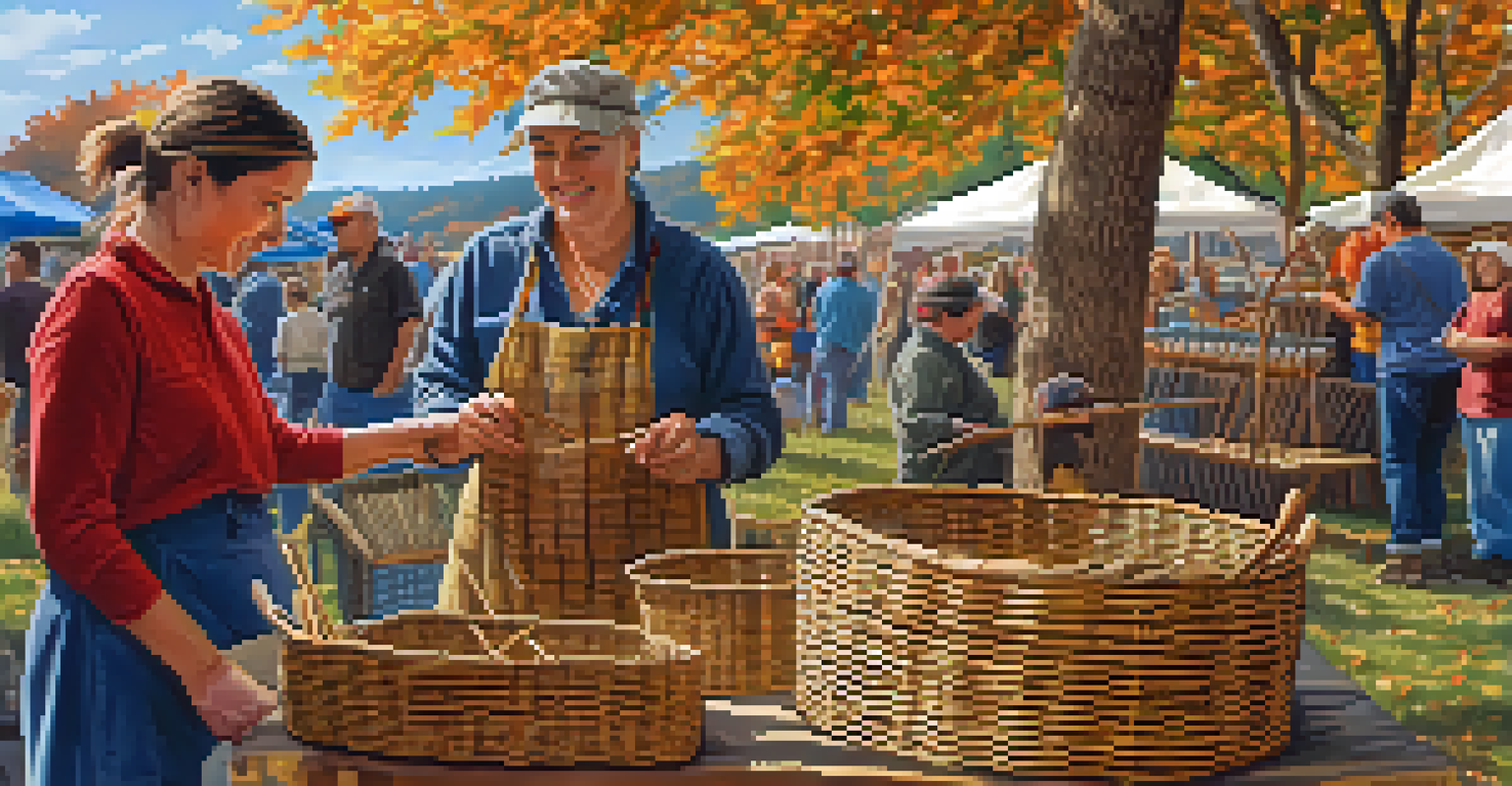Exploring the Rich Traditions of Appalachian Folk Art

The Heartbeat of Appalachian Culture: An Overview
Appalachian folk art represents a unique tapestry of traditions, reflecting the region's rich history and cultural diversity. It encompasses various forms of expression, from music and storytelling to crafts and visual arts. This art form has deep roots, stemming from the early settlers who brought their customs and skills to the mountains.
Art is the most beautiful of all lies.
As you explore this vibrant culture, you'll find that each piece of art tells a story, often rooted in the daily life and struggles of the Appalachian people. The themes of nature, community, and resilience are prevalent, making this art not just beautiful but also meaningful. It serves as a bridge connecting generations and preserving the past.
From intricate quilts to hand-carved wooden items, each artwork serves as a reminder of the region's heritage. By delving into these traditions, we not only appreciate the artistry but also gain insight into the values and experiences of those who came before us.
Quilting: Stitching Together Stories and Memories
Quilting is one of the most cherished forms of Appalachian folk art, with each quilt often embodying personal stories and community ties. These handmade creations showcase vibrant patterns and colors, reflecting the creativity of the quilter. Historically, quilting bees brought women together, fostering friendships and community spirit.

Every quilt tells a tale, whether it’s a family history passed down through generations or a reflection of regional motifs. Some patterns are inspired by nature, while others might depict significant events, effectively weaving together the fabric of life in Appalachia. This artistry is not just about warmth; it’s about connection.
Rich Heritage in Appalachian Art
Appalachian folk art reflects a diverse cultural tapestry that connects generations through music, crafts, and storytelling.
Moreover, quilting in Appalachia has evolved, with contemporary artists experimenting with new techniques and materials. This blend of traditional and modern influences keeps the art form alive, ensuring that future generations continue to share their stories through fabric and thread.
Woodcarving: Crafting Nature into Art
Woodcarving is another vital aspect of Appalachian folk art, transforming natural materials into stunning pieces of functional and decorative art. From intricate figurines to practical utensils, woodcarving showcases the skill and creativity of artisans who work with local timber. The connection to nature is palpable, as many carvers draw inspiration from the surrounding landscapes.
The best artists know that they are not the authors of their work, but rather the conduits through which it flows.
This craft has deep historical roots, often passed down through families, with techniques refined over generations. Carvers often incorporate symbolism into their work, using motifs that resonate with local folklore or personal beliefs. This adds layers of meaning, making each piece not just an object, but a narrative.
Today, woodcarving continues to thrive, with artisans blending traditional methods with modern aesthetics. Workshops and festivals celebrate this craft, encouraging new generations to explore the beauty of carving and its significance in Appalachian culture.
Basket Weaving: A Practical Art Form
Basket weaving is a practical art form that has long been an integral part of Appalachian life. Traditionally made from natural materials like reeds, willow, and pine needles, baskets were essential for daily tasks such as gathering and storing food. The artistry in basket weaving not only demonstrates skill but also a deep understanding of the materials and techniques.
Each basket is unique, often reflecting the personal style of the weaver and the resources available in their environment. Patterns and shapes can vary widely, with some baskets designed for specific uses while others serve purely decorative purposes. This versatility highlights the functional beauty of Appalachian folk art.
Quilting: Community and Connection
Quilting serves as a cherished tradition in Appalachia, weaving together personal stories and community spirit through vibrant patterns.
In recent years, basket weaving has gained recognition as an art form in its own right, with artisans exploring innovative designs and materials. Workshops and exhibitions promote this craft, ensuring that the tradition of basket weaving continues to thrive in the Appalachian community.
Ceramics: Shaping Clay into Cultural Expressions
Ceramics in Appalachia serve as both functional ware and artistic expression, bridging utility with creativity. Local clay, shaped by skilled hands, transforms into everything from dinnerware to decorative pieces, often showcasing the cultural heritage of the region. The glazes and designs frequently echo the natural surroundings, reflecting the beauty of the Appalachian landscape.
Historically, pottery was essential for everyday life, but it has evolved into a respected art form. Many potters draw from traditional techniques while incorporating modern influences, creating a diverse range of styles. This blend of old and new adds depth to the ceramic arts, making each piece a unique representation of Appalachian identity.
Exhibitions and studios across the region celebrate this craft, allowing visitors to witness the process and appreciate the artistry involved. As more people engage with ceramics, the tradition is revitalized, ensuring that it remains a vital part of Appalachian culture.
Music: The Soul of Appalachian Folk Art
Music is at the heart of Appalachian culture, serving as a powerful expression of identity and community. Traditional genres like bluegrass, old-time, and folk music are not just entertainment; they are storytelling mediums that convey the struggles, joys, and histories of the people. Instruments like the banjo, fiddle, and guitar are commonly used, creating a sound that is distinctly Appalachian.
The oral tradition of music in Appalachia has allowed stories to be passed down through generations, preserving culture and history. Community gatherings, such as festivals and square dances, often feature live music, fostering a sense of belonging and shared experience among participants. This communal aspect is vital, as it strengthens the bonds within the community.
Evolving Traditions in Folk Art
Contemporary artists are revitalizing Appalachian folk art by blending traditional techniques with modern influences, ensuring its relevance today.
In contemporary times, Appalachian music continues to evolve, blending with modern genres while maintaining its roots. Artists are finding new ways to express their experiences, ensuring that the vibrant musical traditions of Appalachia remain relevant and celebrated in today's world.
The Future of Appalachian Folk Art: A Vibrant Continuation
The future of Appalachian folk art is bright, with many contemporary artists drawing inspiration from traditional practices while infusing their unique perspectives. This evolution not only honors the past but also invites new interpretations and innovations that reflect current societal themes. The intergenerational exchange of knowledge and skills is crucial in this process, ensuring that young artists remain connected to their roots.
Organizations and festivals dedicated to Appalachian folk art play a significant role in promoting awareness and appreciation. By providing platforms for artists to showcase their work, these initiatives help keep the traditions alive while also encouraging dialogue about the cultural significance of this art. This support fosters creativity and community engagement.

As the world increasingly values authenticity and craftsmanship, Appalachian folk art is gaining recognition beyond the region. This growing interest offers opportunities for artists to reach wider audiences, ensuring that the rich traditions of Appalachian folk art continue to inspire and resonate for years to come.